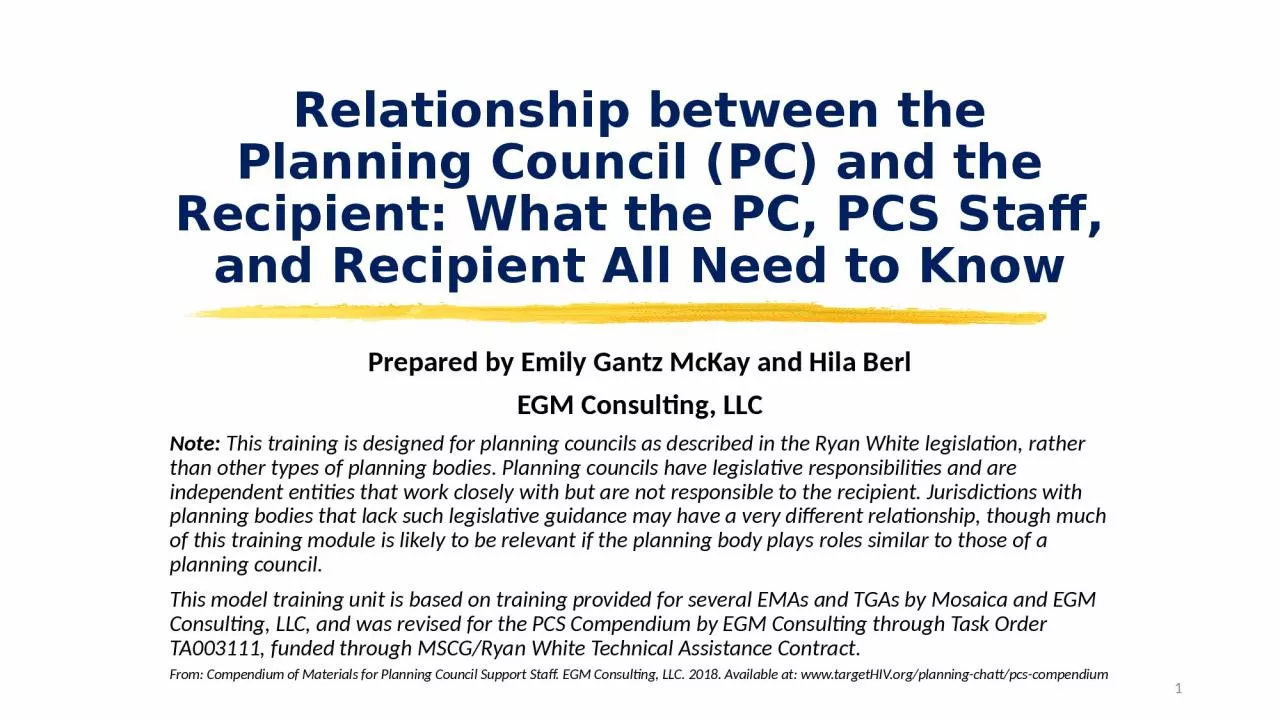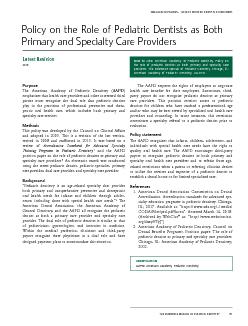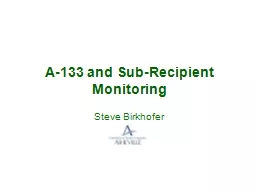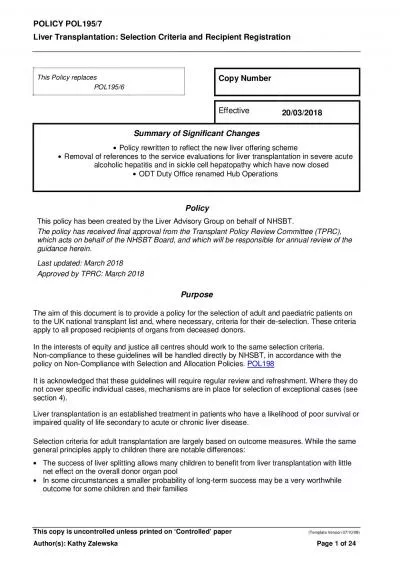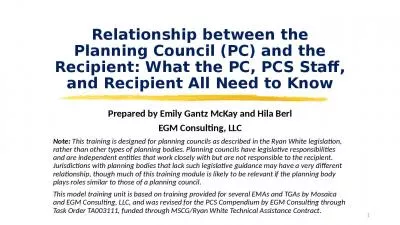PPT-Relationship between the Planning Council (PC) and the Recipient: What the PC,
Author : oneill | Published Date : 2023-08-23
PCS Staff and Recipient All Need to Know Prepared by Emily Gantz McKay and Hila Berl EGM Consulting LLC Note This training is designed for planning councils
Presentation Embed Code
Download Presentation
Download Presentation The PPT/PDF document "Relationship between the Planning Counci..." is the property of its rightful owner. Permission is granted to download and print the materials on this website for personal, non-commercial use only, and to display it on your personal computer provided you do not modify the materials and that you retain all copyright notices contained in the materials. By downloading content from our website, you accept the terms of this agreement.
Relationship between the Planning Council (PC) and the Recipient: What the PC,: Transcript
Download Rules Of Document
"Relationship between the Planning Council (PC) and the Recipient: What the PC,"The content belongs to its owner. You may download and print it for personal use, without modification, and keep all copyright notices. By downloading, you agree to these terms.
Related Documents

